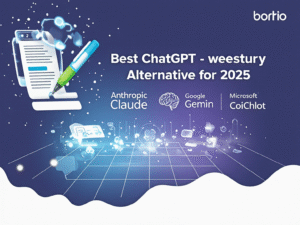To SEO optimize your website traffic in 2025, you need to be more familiar with the digital landscape is not only more competitive, but it’s also smarter. AI is transforming how search engines rank content, and how users discover it. If you’re a business or content creator in New York, your challenge isn’t just standing out—it’s rising above the clutter with smart, ethical, and scalable strategies.
This guide isn’t just another SEO checklist. It’s a strategic blueprint tailored for:
- Small business owners in New York who want to generate leads without hiring a big agency.
- Bloggers and content creators trying to scale their audience.
- In-house marketing teams working to impress bosses or clients with KPIs.
- Startup founders needing sustainable growth.
- Freelancers and consultants who need to stay competitive in an ever-changing field.
We’ll show you how to boost your website, increase visibility, and grow your organic traffic using proven tactics that align with SEO 2025 standards.
1. Why Traditional SEO Tactics Are Obsolete in 2025
If you’re still relying on outdated practices—like keyword stuffing or link exchanges—you’re not just lagging behind; you’re being ignored by Google. Here’s why:Search Has Evolved:
Google’s SGE (Search Generative Experience) has changed the game. Instead of ten blue links, users now see AI-generated summaries that pull answers directly from trusted sources. This means that even if your site ranks #1, it might be bypassed if your content isn’t considered authoritative or structured for SGE. AI-generated summaries powered by tools like Gemini or ChatGPT now dominate featured positions. These summaries prioritize clarity, accuracy, and trust. If your content doesn’t meet these standards, you’re left out of the spotlight—even if you’ve technically earned the rank. EEAT signals (Experience, Expertise, Authoritativeness, Trustworthiness) are no longer optional—they’re central. Google favors content that proves the creator knows their stuff. And this proof must be clear, from author bios to external references and customer feedback. Example: Imagine you run a law firm in Manhattan. In the past, you could rank by stuffing “Best divorce lawyer NYC” into your blog. Today, Google is smarter. It looks for:- First-person case studies showing successful outcomes
- Author pages detailing legal credentials and experience
- Reviews on Google and directories like Avvo

2. Build Topical Authority, Not Just Keyword Density
SEO isn’t just about sprinkling in a keyword and hoping for clicks. In 2025, it’s about owning a topic through depth, structure, and strategic content mapping. If Google sees your site as a hub of knowledge for a subject, you’re far more likely to rank across multiple related terms.Step 1: Identify a Topic Cluster
Start with a core theme your audience cares about. For a SaaS company in NYC, “CRM Software Optimization” might be that topic. This is the overarching subject that positions you as an expert.Step 2: Build a Pillar Page
Your pillar page is your most important content —the ultimate guide that covers the topic broadly and deeply. It might be titled: “The Ultimate Guide to CRM Optimization for NYC Startups.” Within this piece, you’ll weave in:- Multiple long-tail keywords
- Data from industry reports
- Links to deeper, more specific supporting content
Step 3: Support with Cluster Content
Surround the pillar with tightly connected, focused articles. Think of it as building out your knowledge graph. For example:- “How NYC Sales Teams Use CRM Workflows”
- “Top 10 CRM Tools for Small Businesses in Brooklyn”
- “How to Boost CRM ROI with Local SEO Strategies”
Tools:
- Surfer SEO helps build semantically rich outlines.
- Frase.io reveals gaps between your content and top performers.
- Topic visualizes what related subjects you’ve missed.
NYC Tip:
Localize where possible. “CRM adoption trends in Brooklyn vs. Manhattan” adds both topical depth and geo-relevance, boosting your EEAT with local audiences.3. Go Hyperlocal: Dominate Your Local Niche
New Yorkers don’t just search for solutions—they search for nearby, fast, and trusted solutions. In a massive market like NYC, owning your local digital space gives you a serious edge.a. Google Business Profile Optimization
Claim your profile, then fully complete it. Add a compelling description, photos, business hours, and correct contact details (NAP). Don’t forget service categories—choose terms like “SEO Consultant” or “Local Web Designer in Manhattan.”b. Localized Keywords
Integrate them seamlessly—not forced. For instance:- “Work with an NYC SEO consultant with experience in Harlem-based startups”
- “Trusted SEO services for New York businesses in hospitality”
c. Location Pages
If you serve more than one borough, build specific pages. For example:- “SEO in Brooklyn for Restaurants”
- “Manhattan SEO Services for Tech Startups”
- Area-specific case studies
- Customer testimonials
- Google Maps embeds
d. Get Local Backlinks
Sponsor a community event in the Bronx. Write for a Brooklyn small business blog. Get listed on NYC directories and startup hubs. Each link reinforces your local relevance and builds trust with both users and search engines.4. AI is Shaping the Future of SEO
AI is no longer optional in SEO—it’s foundational. Google’s algorithm is deeply intertwined with AI technologies that understand context, intent, and nuance far beyond keywords.a. Optimize for AI Summaries
To be included in Google’s AI-generated answers, your content must be clear, structured, and trustworthy. Start your posts with direct answers to the searcher’s question. Use headings like “How to Boost Website Traffic Organically in 2025” or “Best Local SEO Strategies for NYC Startups.” Add FAQ schema. Include numbered lists and concise summaries.b. Use AI to Create Smarter Content
AI tools aren’t here to replace your voice—they’re here to speed up research and structure. Use ChatGPT or Gemini to brainstorm content outlines, potential questions, and competitor analysis. SurferSEO can align your content with real-time SERP data. Originality.ai ensures your final product feels human and unique. Example: If you run a Shopify consulting business in Manhattan, add a section titled:“How can Shopify stores in NYC increase traffic without paid ads?”Then answer it clearly. This improves your chances of being pulled into AI summaries on both desktop and voice search.
5. EEAT: The New Trust Currency
Trust is no longer a soft metric—it’s a ranking factor. In a world of AI-generated content and misinformation, Google wants to see that your content is written by real people with real experience.Why EEAT Matters
EEAT ensures the content is:- Written by someone qualified
- Supported by credible sources
- Published on a trustworthy platform
How to Demonstrate EEAT
Include detailed author bios with full names, credentials, and links to LinkedIn. Feature client case studies with real data—e.g., “Our strategy led to a 145% traffic increase for a Bronx law firm in just 3 months.” Include logos of media features or partners. And keep your site secure and user-friendly.For Freelancers and Small Businesses
Show Google and users that you’re real. Gather testimonials. Display logos of brands you’ve worked with. And speak directly: “Here’s how I helped a Brooklyn bakery increase foot traffic and online orders by 300%.”6. Voice Search and Visual Search SEO: The Next Frontier
In 2025, voice and visual search have transcended novelty—they’re now core traffic drivers. New Yorkers are increasingly asking their smart assistants, “Hey Google, how do I increase website traffic organically?” or snapping photos to find local products and services. If your SEO doesn’t account for these trends, you’re missing out on a vast slice of intent-driven traffic.
Why Voice Search Matters
Voice queries tend to be longer, more conversational, and often question-based. For example, a Brooklyn-based food blogger might hear:
“Alexa, what are the best SEO strategies for small businesses in New York?”
This means your content needs to answer specific questions naturally and clearly. Use long-tail keywords and FAQ sections optimized for natural language. Also, local modifiers like “in New York” or “near me” should be sprinkled thoughtfully.
Visual Search Opportunities
Visual search is booming thanks to tools like Google Lens and Pinterest Lens. For NYC retailers or service providers, this means optimizing images with:
- Descriptive alt texts (“handmade ceramic mugs NYC artisan”)
- Structured data (Schema.org for products, events)
- Fast-loading, high-quality images that appeal to mobile users
For example, a Manhattan boutique selling vintage clothing can attract shoppers by tagging images with local SEO keywords and encouraging customers to share photos on Instagram with location tags.
Expert Tip:
Build conversational, question-based content that can be pulled into voice search answers. Consider adding video or interactive visuals—Google favors engaging multimedia that holds user attention.
7. Semantic Search and Structured Data: Speaking Google’s Language
Google’s AI doesn’t just scan for keywords—it understands meaning, context, and relationships between concepts. This is semantic search, and it’s why structured data markup is critical for 2025 SEO success.
What is Semantic Search?
Semantic search helps Google interpret what your content is about, beyond the words. For example, a page about “best NYC coffee shops” isn’t just about coffee or NYC, but about local culture, ambiance, and user experience.
How to Use Structured Data
Adding Schema.org markup to your pages helps search engines better understand your site’s content and can unlock rich results like:
- Star ratings in local business reviews
- Event dates and locations
- FAQs and How-To steps
For New York businesses, local business schema with accurate NAP (Name, Address, Phone) info is crucial. Google then uses this to power knowledge panels and maps listings that dominate SERPs.
Example:
An SEO consultant in NYC can mark up their client testimonials, service offerings, and office location, helping them stand out in local searches.
Pro Tip:
Regularly audit your site’s structured data with Google’s Rich Results Test tool and fix errors. This keeps your site eligible for enhanced search features.
8. Core Web Vitals and UX: Speed and Experience Drive Rankings
Google’s Core Web Vitals continue to be a major ranking factor in 2025. It’s not just about content anymore—if your website loads slowly or offers a poor user experience, you’ll lose traffic and rankings.
Why Core Web Vitals Matter
These metrics measure real user experience: loading speed, interactivity, and visual stability. For NYC businesses, especially those targeting mobile users on the go, fast, smooth sites convert better.
How to Improve Core Web Vitals
- Compress images without losing quality.
- Use a Content Delivery Network (CDN) to serve content faster across NYC boroughs.
- Minimize JavaScript and CSS blocking resources.
- Implement lazy loading for below-the-fold content.
Real-World Example:
A Brooklyn-based SaaS startup optimized their signup page’s loading time from 7 seconds to 2 seconds, leading to a 30% increase in signups from organic traffic.
9. Content Marketing for SaaS Startups and Other Niche Audiences
Content marketing remains king, but in 2025, it needs to be smarter and more targeted. SaaS startups in NYC, for instance, should focus on educational, problem-solving content that aligns with their product-led growth strategies.
Focus on Buyer Journey
Create content for every stage—awareness, consideration, and decision. For example:
- Blog post: “How to increase website traffic organically with SaaS tools”
- Webinar: “Boost your website traffic using automation in NYC startups”
- Case study: “How we helped a Manhattan SaaS company grow organic traffic by 200%”
Leverage Customer Data
Use analytics and heatmaps to understand what content drives conversions. Double down on topics that resonate locally (e.g., “SEO strategies for New York-based SaaS companies”).
Example:
A SaaS company in NYC creating a detailed blog series about how their software improves NYC businesses’ SEO saw a 50% rise in qualified leads in six months.
10. Internal Linking Strategies: The SEO Web You Can Control
Internal linking is often overlooked but remains one of the easiest ways to boost website traffic. Linking related content signals topical authority and keeps visitors engaged longer.How to Build a Strong Internal Link Structure
- Use descriptive anchor texts naturally.
- Link from high-authority pages to newer content.
- Create topic clusters and interlink all related articles.
- Add navigation links to cornerstone content in sidebars and footers.
Local Example:
A New York SEO expert’s website might link “SEO services for New York businesses” page to blog posts like “Local SEO expert NYC: What You Need to Know” or “SEO strategies for small businesses in Manhattan.”Pro Tip:
Regularly audit internal links with tools like Screaming Frog or Ahrefs to fix broken links and identify opportunities.11. SEO Checklist for 2025: Your Step-by-Step Traffic Booster
To make sure you don’t miss a beat, here’s a practical SEO checklist tailored for New York-based businesses and creators:- ✅ Claim and optimize Google Business Profile with local keywords.
- ✅ Perform keyword research focusing on shortform, long-tail, and local keywords.
- ✅ Build topical authority with pillar pages and cluster content.
- ✅ Optimize for AI summaries and voice search queries.
- ✅ Use structured data for local business, FAQs, and events.
- ✅ Improve Core Web Vitals — speed, interactivity, and stability.
- ✅ Implement internal linking strategies across your site.
- ✅ Regularly update content to maintain relevance and freshness.
- ✅ Collect and display EEAT signals: author bios, testimonials, credentials.
- ✅ Get local backlinks from NYC directories, blogs, and events.
- ✅ Use analytics to track and adjust your SEO campaigns.
12. Recommended SEO Tools for New York Businesses
There’s no shortage of SEO tools, but here are some top picks to supercharge your efforts:
Tool |
Purpose |
Free/Paid |
Why It’s Useful |
|---|---|---|---|
| Google Search Console | Monitor site performance and indexing | Free | Essential for tracking SEO health |
| Surfer SEO | Content optimization based on SERPs | Paid | Builds topic clusters and semantic relevance |
| Ahrefs | Keyword research and backlink analysis | Paid | Find local competitors and backlink sources |
| SEMrush | All-in-one SEO platform | Paid | Competitor research and local SEO |
| Google Business Profile | Manage local presence and reviews | Free | Key for NYC local SEO dominance |
| AnswerThePublic | Discover long-tail keywords and questions | Free/Paid | Great for voice search and FAQ content |
| Screaming Frog | Site auditing and link checking | Free/Paid | Keeps internal linking and SEO clean |



